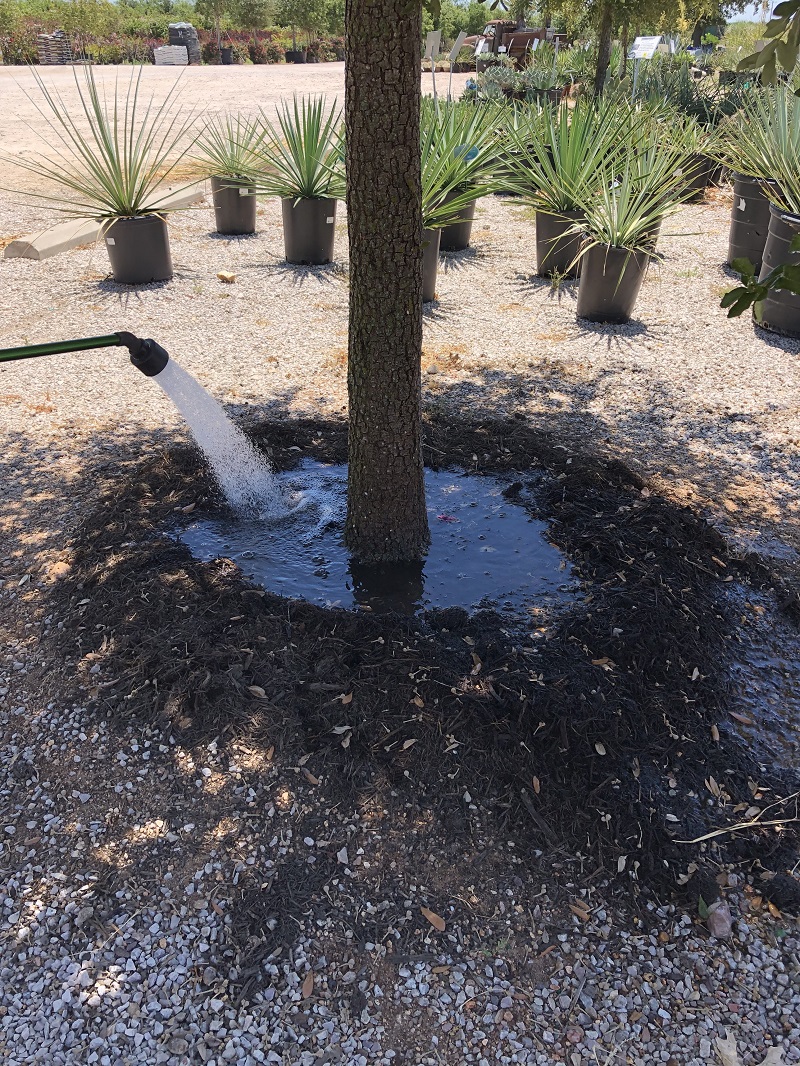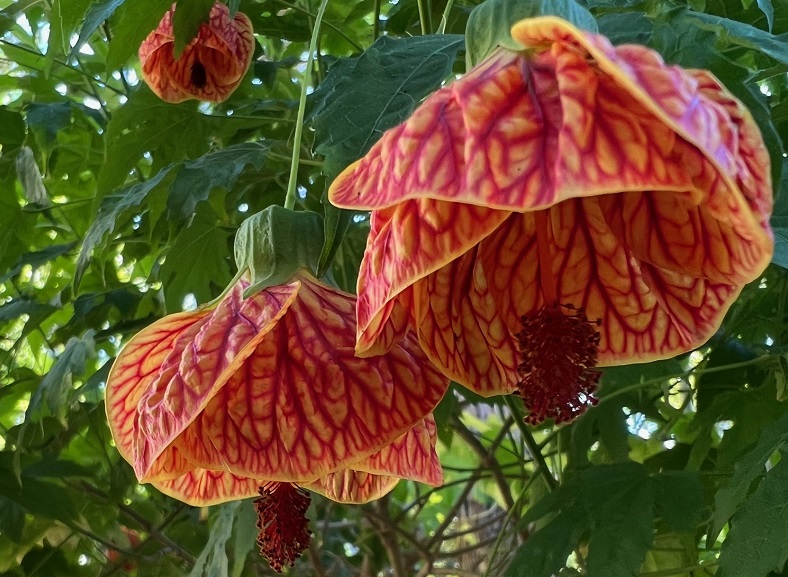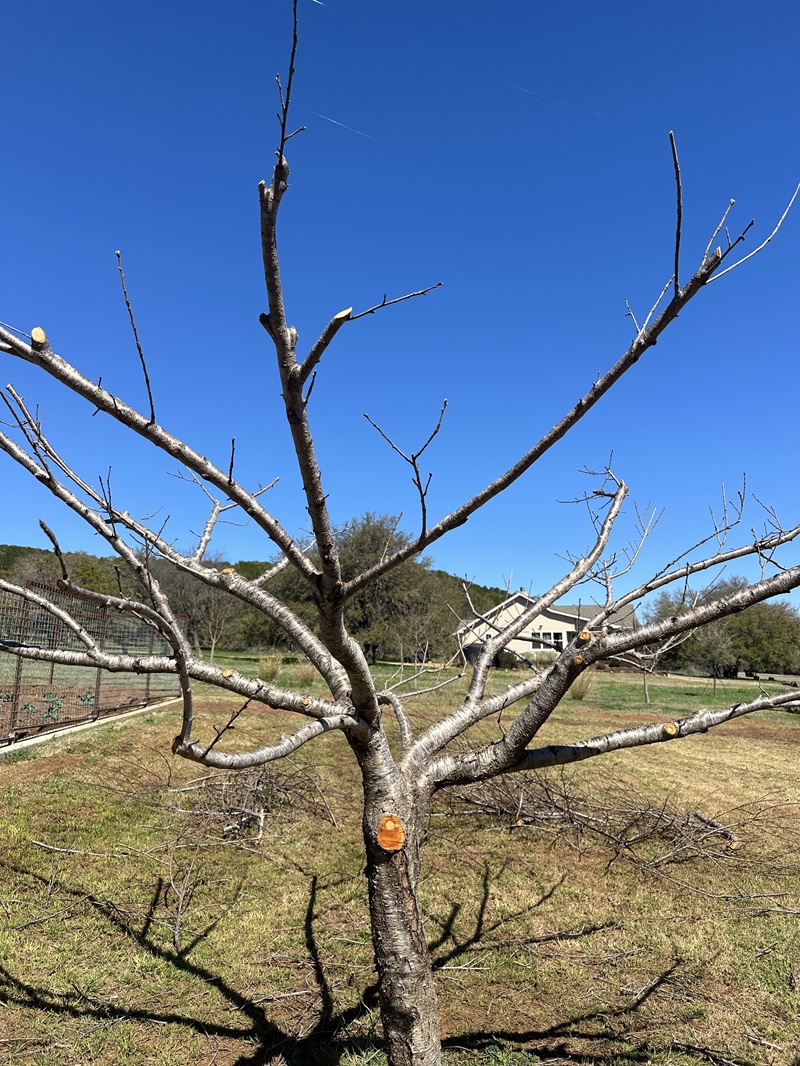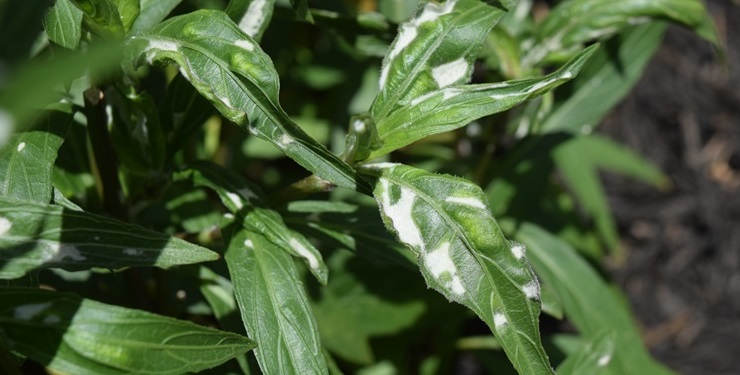Hopefully you have followed our watering guidelines to establish your tree in the landscape for the FIRST YEAR . Now it is time to talk about how to encourage the root system to spread out and grow to its full potential in SUBSEQUENT YEARS.
I have talked to many people who continue to water their trees, year after year, right up next to the trunk of the tree. Unfortunately, that is not where the majority of the roots SHOULD be, nor where you should encourage them to be. It is important to understand where roots grow so that we can make informed decisions on watering.
The majority of tree roots, or about 95% of them, are going to be in the top 1′-2′ of soil. Roots need oxygen to survive and respire, and at greater depths there is very little oxygen. Roots will typically grow one to one and a half times the HEIGHT of the tree OUT from the tree. If your tree is 20′ tall, the roots will extend at least 20′ OUT from the tree, and that means IN ALL DIRECTIONS. This is an interesting concept, and helps us understand WHERE to direct the watering after the first year. Most of you have probably heard to water “under the canopy” or “to the dripline” of the tree. While this is most likely going to be sufficient, it is important to remember that some species may expand their root systems even further, and care must be taken to water sufficiently and avoid herbicide application in a broader area under these trees.
So, after the first year, when you are addressing the water application to the original root system and 1′ beyond, you should increase the area by approximately 2′ each year. Even further if the tree is fast-growing. This will encourage the broad-spreading root system that will support the tree with water and nutrients in the years to come.
Since different soils drain at different rates, and all irrigation systems are not the same, you should perform an audit to see how long it takes for your irrigation to percolate at least 8″-10″ deep. Generally , it takes about 1 inch of water to percolate most soils to a depth of 4″-6″. This is how deep we want to water our lawns. This will be sufficient most years for the root maintenance of trees planted in the lawn. However, in a drought year, even if it is in the winter, a deeper watering would be recommended every 2-3 weeks or so, depending on how fast the soil dries. To check how long to run the irrigation, set some straight-sided containers in the root zone. Run the irrigation until you have collected one inch of water. (Be sure to do this when the soil is dry so that it is accurate.) Push a shovel into the soil, gently push the handle away from you and look behind the shovel blade to see how far the water has penetrated the soil. Next, run the irrigation until you have collected a total of two inches of water, and check the soil again. This will give you information on how long to run the irrigation to water the lawn vs. the tree roots. The good news is, you only have to perform this test once to learn about your irrigation rate and soil percolation rate.
Remember to keep the tree mulched, pulling the mulch back 6″ from the trunk to avoid damaging the vascular system, which is just under the bark. Having a “mow ring” surrounding the tree in a lawn avoids the potential for “string trimmer” damage at the base of the tree. Once this has occurred, trees do not “heal” and it can mean a slow death for the tree.
Protecting the trunk from deer from September to February when the bucks are “in the rut” is also important, as the damage done to the trunks is irreversible and may also mean a slow death.
Annual fertilization with MicroLife 6-2-4 fertilizer in the spring just as the tree is leafing out is recommended, and should be placed under the canopy.
Pruning should be minimal the first few years and should take place at the appropriate time of the year. Cuts should be made in the proper location to avoid incidence of disease. Consult Texas AgriLife Extension for pruning information.





Hi Mary Kay,
What causes the bark to pull away from the bottom of fruit trees? I water daily during 100+ degree weather. Should I spray an insecticide around the base where the outer layer has pulled away, or paint the area?
Thank you, Kay
Hi Kay,
I would need more information and photos to be able to advise you properly. Please send photos to info@backbonevalleynursery.com and I will be glad to reply. We do not use tree paint on trees, except when pruning oaks in areas with oak wilt, as it is really not good for the trees. I’ll watch for your photos.
Mary Kay